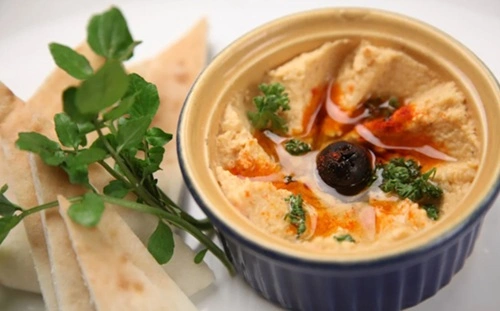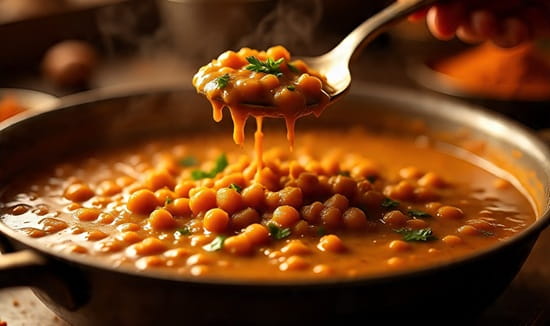Trying new recipes doesn’t have to be difficult. A Mediterranean-themed dinner night at home is a fun way to bring fresh flavors to your table without making things complicated. The ingredients are easy to find. The prep work is simple. And the final result feels special.
This guide will help you plan the perfect Mediterranean night from start to finish. You’ll get ideas for food and drinks. You’ll also learn how to bring everything together in a relaxed and enjoyable way—no stress involved.
Crafting a Balanced Mediterranean Menu

A great Mediterranean spread has variety. You don’t need a single big main course. Instead, offer a few dishes that balance texture, temperature, and flavor. Combine something creamy, something crunchy, something warm, and something fresh.
Use ingredients like olive oil, lemon, garlic, tomatoes, cucumbers, chickpeas, and herbs. Think about how the dishes will taste together. You want a meal that’s light but filling, with a good mix of flavors. A balanced menu also makes the meal more enjoyable for everyone, including vegetarians or those avoiding gluten.
The Magic of Homemade Dips
Dips are a must-have on a Mediterranean table. They’re easy to make and full of flavor. Hummus is the most popular option—and for good reason. It’s creamy, rich, and goes with almost everything. If you are wondering how to make instant pot hummus, we have got you covered.
To make it, pressure cook dried chickpeas for 40–45 minutes, then blend them with garlic, lemon juice, tahini, olive oil, and reserved cooking liquid until smooth. The result is a creamy, fresh dip that’s richer than store-bought versions.
Alongside hummus, you can add other dips like tzatziki (a yogurt and cucumber dip), baba ghanoush (made from roasted eggplant), or muhammara (a red pepper and walnut spread). Serve them with sliced pita or fresh vegetables like cucumber and bell pepper sticks.
Fresh Vegetables and Herbs for Color and Crunch
Fresh produce is a big part of Mediterranean cooking. It adds both texture and brightness to the meal. Use cherry tomatoes, thin cucumber slices, olives, radishes, and red onions. Arrange them on a platter so they’re easy to grab.
Add fresh herbs to boost flavor. A handful of chopped parsley, mint, or dill can transform even the simplest dish. Herbs also make everything look more colorful and fresh. Dress your veggies lightly with olive oil, a squeeze of lemon, and a pinch of salt to bring out their natural taste.
One Warm Dish to Anchor the Table
Even with lots of dips and veggies, it helps to include one warm dish to round out the meal. This could be as easy as roasted lemon-garlic chicken or grilled lamb skewers. If you prefer a meat-free option, try roasted eggplant with olive oil and sea salt or warm spiced chickpeas.
Serving one warm item gives your guests something hearty and satisfying. It also adds variety in texture and temperature. Make sure whatever you choose can be prepped ahead of time, so you’re not stuck in the kitchen while everyone else starts eating.
Warm Bread That Brings It Together
Bread is an essential part of a Mediterranean meal. It helps scoop dips, adds texture, and fills out the plate. Fresh pita is a popular choice. You can warm it in the oven for a few minutes to make it soft and ready to serve. If you want something with a bit more flavor, try flatbread topped with sesame seeds or za’atar.
Cut the bread into quarters or strips so guests can pick it up easily. Place it in a basket or on a wooden board, and cover it with a clean cloth to keep it warm. If you’re serving gluten-free guests, include a simple rice cracker or veggie slices as an alternative. Bread might seem like a small detail, but it plays a big role in how everything comes together.
Add a Grain-Based Salad for Balance
Grain salads are filling, easy to prepare, and full of flavor. They also hold up well if made a few hours in advance. One classic option is tabbouleh, made with bulgur wheat, parsley, lemon, olive oil, and chopped tomatoes. If you don’t have bulgur, couscous or quinoa works too.
To make it interesting, add extras like roasted red peppers, chickpeas, or diced cucumber. Keep the dressing light. A simple mix of olive oil and lemon juice works best. These salads bring texture and help balance out the dips, bread, and warm dish you’re serving.
Refreshing Drinks That Fit the Theme
The drink menu should feel light and fresh. Sparkling water with lemon slices is a good non-alcoholic choice. Herbal iced teas, like mint or hibiscus, also pair well with the flavors of the meal. For something with alcohol, offer dry white wine or a light red, such as Pinot Noir or Grenache.
If you’re hosting a group, consider making a Mediterranean-inspired sangria. Use white wine, citrus fruits, and fresh mint for a clean and bright flavor. Avoid drinks that are too heavy or sweet. Keep it simple and refreshing so the drinks enhance the food rather than compete with it.
Simple Sweets to End the Night
Dessert doesn’t need to be rich or heavy. Mediterranean sweets often use honey, nuts, and fruit in small portions. Baklava is a well-known option with layers of flaky pastry and chopped nuts. If that feels like too much work, try Greek yogurt topped with honey and crushed walnuts.
You could also serve fresh dates or figs, or make a semolina cake with orange syrup. The goal is to offer just a little something sweet to finish the night. Choose one dessert and keep it small—it’s more about the gesture than the portion.
Sharing the Experience Without Stress
One of the best parts about a Mediterranean-style dinner is how relaxed it feels. Most of the food can be served at room temperature. You don’t need to worry about strict timing. Arrange the dishes on a table or counter and let everyone help themselves.
This setup makes it easy for guests to choose what they want and eat at their own pace. It also takes pressure off the host. You can spend more time enjoying the evening instead of managing the kitchen. Serve everything family-style and let the conversation flow.
Hosting a Mediterranean night doesn’t have to be complicated. With a few fresh ingredients, a simple setup, and a plan for variety, you can create a meal that feels special without too much effort. The focus isn’t on presentation or perfection. It’s about offering good food, creating a calm space, and sharing a meal with people you enjoy.
Try a few of these ideas, and you’ll see how easy it is to bring the flavors of the Mediterranean into your home. Once you’ve done it once, you’ll want to make it a regular part of your dinner rotation.



